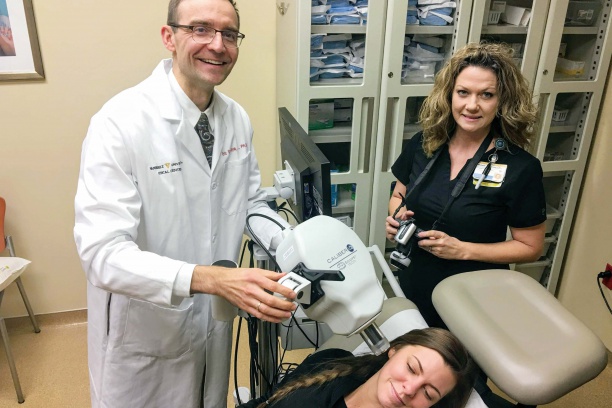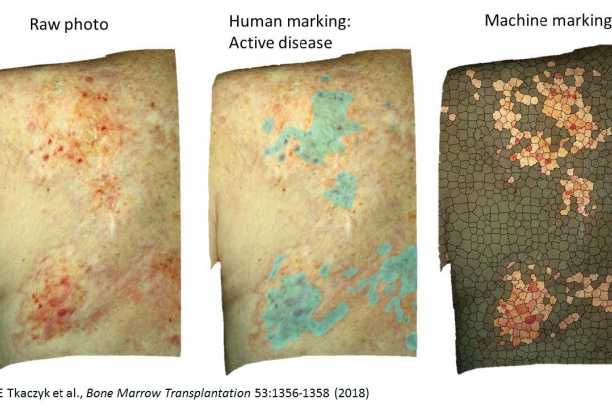Research has been growing at an impressive pace, with new collaborations, additional investigators, extramural grants, and a regular research forum. For example, Allison Hanlon, MD, PhD, in collaboration with researchers from Yale University, examined the genetic landscape of atypical fibroxanthoma and undifferentiated pleomorphic sarcoma, two rare cutaneous tumors. Similarly, John Zic, MD, is conducting a phase II study of resiquimod gel for the treatment of early stage patients with mycosis fungoides. In addition, two of our Department of Dermatology teams have added full-time research staff and also obtained recent federal grants.
The Clinical Research Group, led by Meg Chren, MD and Assistant Professor of Dermatology Lee Wheless, MD, PhD, focuses on patient- and data-based research on the genetic basis, natural history, predictors, and optimal care of common skin conditions. For example, Dr. Wheless, an expert in genetic epidemiology, is using Vanderbilt’s rich databases and biorepositories to study development of skin cancers in high-risk patients such as those who have received organ transplantations. Meg Chren has a newly-funded NIH R01 grant to study a novel user-friendly mobile tool that measures a patient’s experience of skin disease (which is called the Skin Vital Signs), to learn if feeding-back this information to clinicians can improve care. Assisting Drs. Chren and Wheless is LaVar Edwards; LaVar is an accomplished health systems analyst and clinical researcher whom they recruited from the University of Utah.
The Imaging Research Group, led by Assistant Professor of Dermatology and Biomedical Engineering Eric Tkaczyk, MD, PhD, dovetails with the Vanderbilt Cutaneous Imaging Clinic (VCIC). The VCIC was founded in 2016 as a platform for direct clinical translation of engineering for clinical impact in dermatology. A major focus is graft-versus-host disease (GVHD), the leading cause of nonrelapse long-term mortality and morbidity after allogeneic stem cell transplantation; to measure disease course in patients with GVHD the VCIC has used 3D photography, advanced image processing, deep learning with convolutional neural networks, crowd-sourcing, and noninvasive measurement of skin biomechanical properties with a unique handheld device called the Myoton. Additionally, post-doctoral fellow Inga Saknite, PhD, a physicist, is developing measures of live white blood cell motion in patients’ skin by noninvasive in vivo reflectance confocal microscopy and video analysis. Recent grant awards for these projects include a Discovery Grant from the Vanderbilt University Provost’s Office, an R21 from NIAMS (PI Benoit Dawant from Computer Science), and a Career Development Award from the Department of Veterans Affairs (PI Eric Tkaczyk).
The Dermatology Research Forum is a new regular venue for faculty, residents, and trainees to advance their interest in conducting and collaborating on research of all kinds. Over breakfast, interested members of the Department gather to discuss research works-in-progress, from genesis through grant application to manuscript review.
Through these efforts and many more, our young Department is engendering a vibrant community focused on systematic scientific inquiry.



